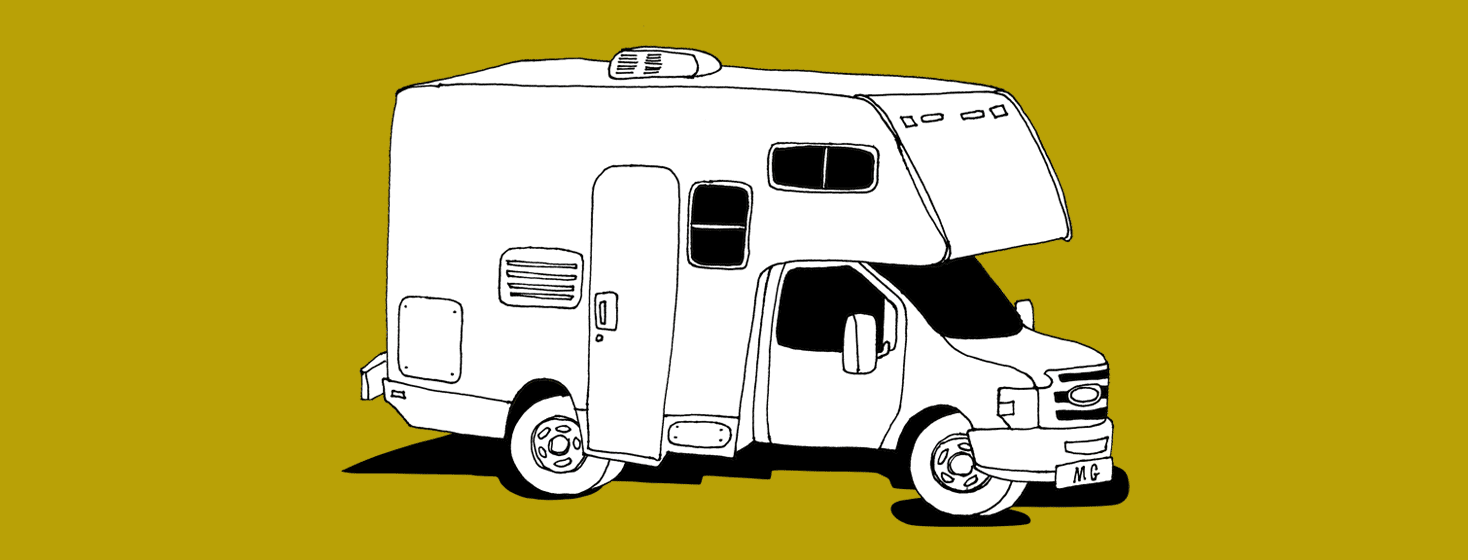On the Road Again in the Tiny House
We sometimes reminisce about "good old days." Just a few years ago we traveled constantly both for pleasure and as part of our obligations for an association.
It’s hard to imagine how we could be so nostalgic about delayed flights, airplane meals, and second-rate motels. But that’s the way memory works.
Traveling with MG
With myasthenia gravis (MG), our nomad life came to an abrupt halt. At first, there were frequent bouts of aspiration pneumonia and the struggle for diagnosis. Then the threat of COVID kept us home.
Planes and terminals were not practical at all, and we were paranoid of motels and restaurants. We had so many medical complications - tube feeding, a complex med schedule (including intravenous immune globulin), constant fatigue, unpredictable digestive issues, and double vision when driving.
Most travel didn’t seem worth it. But one annual trip, from our frigid northern home to our sun country condo, was still very high on our list of snowbird priorities. How would we manage it?
Modifying a van
Then hubby remembered his dad’s travel van - no longer than that Prime truck, but carefully modified - a high-tech "tiny house." When we began to search the web we realized that we were on to something. They were hotter than hotcakes! Could this be our solution to traveling with MG?
We found a gently used van on the web and asked a local dealer to do the paperwork and transport. Then we had to figure it out. The modifications were high-tech and then some.
The previous owner had torn select pages from the manual and bound them in sheet protectors. That didn’t help at all. It took a whole day to figure out how to make the water run, another to understand the solar batteries.
Adjusting to the drive
Driving was the easy part. I am the main driver because hubby gets his old double vision when he gets tired.
I love driving but had to drill into my head that a van wouldn’t turn on a dime, accelerate quickly out into traffic, or fit into that parking structure (with the air conditioner on top, 9.5 feet, 9.5 feet, 9.5 feet!)
And of course, hubby couldn’t really relax with me in "his" driver's seat, so there was that constant series of "suggestions."
Packing for the trip
Packing for a 6-month (or more) stay is a real trip (pun intended). Meds, tube feeding materials, 6 months of clothing, breathing treatment, an exercise device, more meds, extra clothing, extra pillows ... and of course, the therapy dogs.
All in a vehicle less than 18 feet long. It took a couple of weeks, but eventually, we were ready to roll.
The trip would take an extra day, but perhaps we could enjoy the ride after being cooped up for a year. Great scenery ahead.
On your own schedule
Hubby has a tendency to snore through that scenery so his half of the tour was pretty much boring. But sitting high and in charge of his own (bathroom) schedule, his stress level was a lot lower than it might have been if our travel was controlled by someone else.
He did have to remember to consume lots of water since dehydration is always an issue. But it was a lot easier than in a car.
If anyone has ever driven I-75 north or south, they will remember the "Cumberland Gap" and that 3000-foot drop on a 2-lane that constantly threatens to make a 4-wheeler like us a "semi-sandwich."
That was exactly the point where hubby needed his bathroom break. The pups picked similarly inconvenient times to get antsy. But we managed.
Avoiding crowds
Arriving at our pleasant and well-planned campground stop was really welcome. I’ll admit that I opted for a glass of wine the first night at the picnic table.
I was gelling until one puppy decided to dig his way into a fire ant nest. No trip is without some mini-disaster. Thankfully, hubby was already sleeping.
Another day, another series of naps, and missed scenery. But in the end, a successful trip. Hubby arrived without past bouts of dehydration and wasn’t exhausted.
We avoided crowded areas where COVID might be a risk. We had brought everything we needed along with us, even though it would take us another 2 weeks to unpack.
Independence with a camper
We really do recommend a tiny camper if you can handle it. The independence, the fact that you can pack everything you need, and the mobility it provides are all sources of calm and extra confidence when health is an issue.
It’s also a great asset for very long medical appointments and provides an easy way to get out of the house for a day trip for someone who must remain conscious of medical issues. I just have to remember to get that tattoo: "9.5 feet!"

Join the conversation